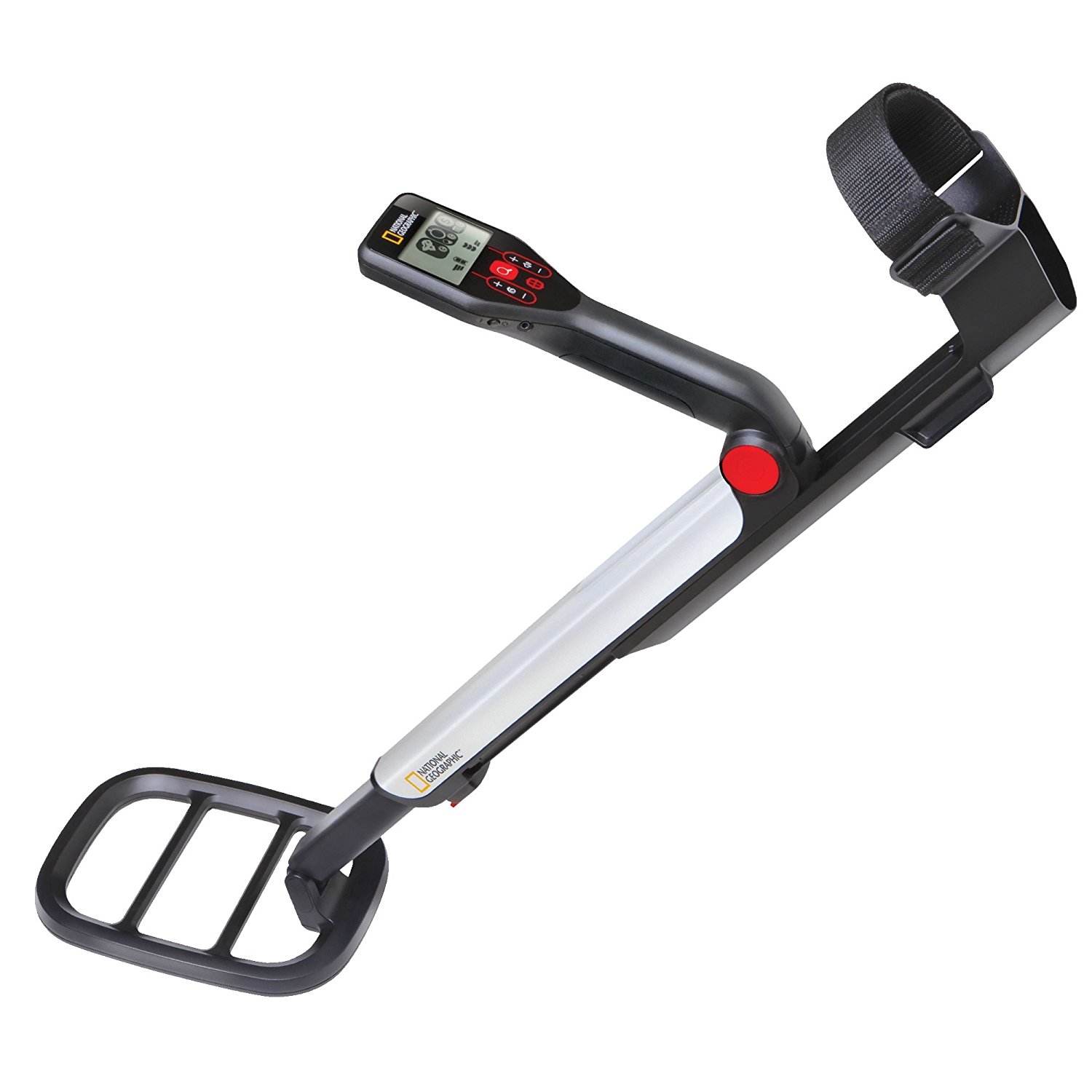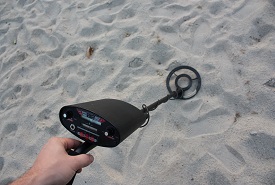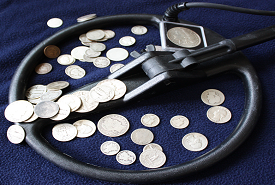What is Metal Detecting and how do I get started?
Metal detecting involves searching for items beneath the ground including silver coins from an old park or homestead, jewelry from the beach, or civil war relics, just to name a few. It requires research, patience, and knowledge of not only your detector, but your surroundings and local laws. Most metal detectors look the same and they consist of a coil (the round thing that goes close to the ground), the control box (your controls and target identification) and the shaft (connects the control box to the coil). Below are the best beginner metal detectors on the market today. Also you can read about what controls most metal detectors have (sensitivity and discrimination) as well as some good starting locations on where to hunt. Click here for what I consider the “basics” of metal detecting.
What is the Best Beginner Metal Detector For Anyone Interested in Starting the Hobby?
There are many great beginner metal detectors. If this is your first metal detector you want something that is low cost (from $100 to $200), simple to use (push buttons or twist knobs), and extremely popular with great reviews, right? Below are the best beginner metal detectors that meet that criteria. Are there other detectors out there? Sure, but none offer what these do for the price. Is there a best beginner metal detector out of the ones below? Yes and no because it depends on you! What do you prefer?
Best Beginner Metal Detectors (listed by popularity):
Bounty Hunter TK4 Tracker IV Metal Detector
The reigning king of beginner metal detectors. Widely used with solid reviews to back it up. What sets the Bounty Hunter Tracker IV apart from the competition is the low cost and the ability to control both discrimination and sensitivity via two easy to use knobs. Click here for Bounty Hunter Tracker IV settings and information.
National Geographic Pro Series Metal Detector
The National Geographic Pro Series Metal Detector is the new kid on the block packed with a big LED display and collapsible body. Think of this metal detector as the most innovative of the bunch. Go to National Geographic Pro Series settings and information for more information.
Garrett Ace 250 Metal Detector
The Garrett Ace 250 metal detector offers a depth finder, target ID, and LCD screen with button interface. This is considered the entry level machine in the Garrett “Ace” series as there is also an Ace 250 & 350. Visit this webpage for Garrett Ace 250 settings and information.
Fisher F22 Metal Detector
The Fisher F2 Metal Detector has a depth indicator, target ID, and LCD screen with discrimination and notch adjustability. Click here for Fisher F2 settings and information.
Features That Make the Best Beginner Metal Detector: Knobs or Buttons? LCD Screen?
While a large amount is about personal preference some people are used to one over the other. The best beginner metal detector is about buying one you are comfortable using. Want an LCD screen with button interface, check out the Garrett Ace 150 Metal Detector or the Fisher F2 Metal Detector. The reason why knobs are common without getting to technical is because you are able to be precise in how sensitive or how much you want to discriminate. Examples of great beginner metal detectors with knobs are the Bounty Hunter TK4 Tracker IV and the Tesoro Compadre. Think about it this way: LCD screen with button interface is easier to set while knobs are better at refining the exact settings you want. It’s like an oldschool radio. With knobs you tune to certain radio stations you like and you can memorize your favorites whereas with buttons you select popular preset stations that in time you can customize yourself. Beginner metal detectors are the same way.
Sensitivity? Discrimination? What does that mean?
Sensitivity is a difficult thing to master as it is a delicate balance between depth and reliability of the signal. In basic terms, the higher the sensitivity the more depth you will get. Now before you spin that dial all the way to max you have to understand that differences in the soil and items with electrical interference will play a huge role in how “stable” your detector is. That is, if you are swinging the detector and it is randomly sounding off (falsing), you have the sensitivity to high. But if you bury a test target and you cannot detect it, trying turning the sensitivity up to see if that helps. With that in mind, when you are first starting out keep the sensitivity at the middle range and as you get comfortable with your detector raise/lower the sensitivity as the surroundings dictate.
Discrimination is important because it determines what items you want the metal detector to sound off on. For example if you turn the discrimination up high (usually clock wise on detectors), you will not hear many items found in the ground such as iron, foils, and other junk. However, you may also miss high value targets. Junk such as pulltabs and some foils have an uncanny resemblance to gold. While opinions vary I believe in letting the tone sound guide you. Certain detectors make different sounds depending on the target (typically a low, mid, and high tone). If the target is a solid repeated signal, I dig it and I never discriminate a target out (with the exception of large iron). Again this is my setting, over time your own personal style will dictate how you set the discrimination.
What can I expect to find with my metal detector?
It doesn’t matter what metal detector you buy, you are going to find items beneath the ground, trust me. What those items are is going to be dependent on your location and the research you put into those spots, not to mention luck. For instance if you go to the local park that has been built in the last 10 or 20 years don’t expect to be digging up old silver coins. Also, if you go to a beach that does not have regular crowds don’t expect much jewelry or any finds for that matter. Now sure, you could get lucky and the spot was used back in the day but research pays off. Another thing to keep in mind is you will dig up trash, lots of it. Don’t get discouraged, just pick it up and throw it away at the end of the hunt because when you detect next time it won’t be there! Getting targets, no matter what they are is a good sign, it means your detector is working properly! One of the most exciting things about metal detecting is not knowing what you have found until you see it in the ground for the first time. I always think to myself “how did this get here?” because trust me you will find random stuff!
If you put in the time to learn your machine and research appropriate locations it doesnt matter if you have a beginner or advanced detector, you will find great items. Metal detectors are about progression & knowledge, if you want to dive in and buy the $1,000+ detector prepare to be disappointed. No metal detector has just one button that says “ON/OFF”. I started with the Bounty Hunter TK4 Tracker IV and after putting in the time necessary to learn the machine I found several silver rings in the dry beach sand and a gold plated locket at the playground. Now will you get lucky with your finds, I don’t know but the only way to find out is picking up a detector and getting out there! Curious to see what some detectorists have found, check out this webpage with videos of the best metal detecting finds.






